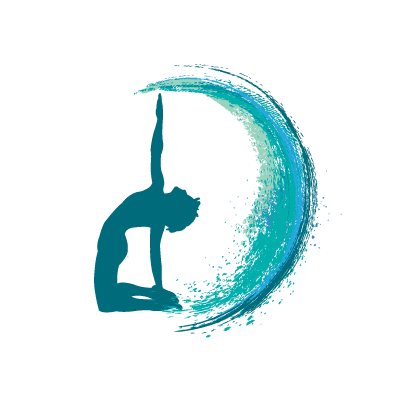Yin and Yang Yoga
Whilst power yoga energises and clarifies us, yin yoga centres and rejuvenates us; integrated into a flowing practice, they create a strong and flexible body and a calm mind.
The Balancing Energies
Hot Power Yoga / Yang flow styles of yoga target the muscles, cardio vascular system, and generally employ rhythmic repetitive movements to stress the fibres and cells of the muscles. Being elastic and moist, the muscles appreciate this form of exercise. Whereas Yin yoga is a centring, quiet practice and focuses on the body's connective tissue. Both forms practiced together are a perfect blend. In our yoga practice there are active asana workouts, which we call yang, but even within these yang practices we find yin aspects - watching our breath mindfully while we flow through a vigorous vinyasa is just one example. All forms of yoga can be described as yin or yang based on which tissues of the body they target. A practice that focuses on exercising muscles and moving blood is yang, a practise that focuses on connective tissue is yin.
When we move and bend our joints doing yoga postures, both muscles and connective tissue are being stretched, the muscles are yang because they are soft and elastic, while connective tissues are yin because they are stiff and inelastic. It might seem confusing to distinguish between "connective tissue" and "muscle." It is true there is no such thing as "just muscle" but the connective tissue that make up muscle are intermixed with other fluids and proteins that give muscle its characteristic elasticity. In a similar way the tendons that bind muscle to bone and the ligaments that bind bones to each other have different elastic characteristics. For our purpose the word "muscle" refers to muscles and their tendons, and the phrase "connective tissue" refers to ligaments and fascia (broad bands of connective tissue).
Yin Becomes Yang
Just as we detect yin elements within the yang aspects, we also notice how yin becomes yang, and yang can transform into yin. These transformations may be slow and subtle, or they may be devastatingly quick. The seasons roll by, changing imperceptibly. The yang of spring and summer transforms day by day into the yin fall of winter. It is not possible to pick the exact moment at which one season becomes another. But the transformations may also come quickly: the eye of a hurricane quickly brings calm, and just as quickly the eye moves on and the other half of the storm strikes. In our own life we often experience both the slow and quick transformations of yin into yang and yang into yin. When we work long hours for many weeks or months in a row (a very yang lifestyle), our body may seek balance by suddenly making us too sick to work (a very yin lifestyle) or it may gift us a severe migraine to slow us down. Yang is quickly transformed into yin.
Yin and Yang Always Coexist
There is no such thing as a pure yin or pure yang attitude, just as there is no such thing as a pure yang or pure yin yoga practice. These two aspects always coexist. Yin or yang might be dominant in expression but the other is always present. When practicing a yin pose such as a forward bend, we won't to be as relaxed as possible. But if we completely relax every muscle in our body then we might actually fall out of the pose. Some muscular effort is required to balance ourselves in a pose and to maintain the gentle traction, so yang effort is present even in yin poses. The same can be said of our attitude during yin yoga. It is yin to passively observe the sensations that arise, but is yang to make the effort needed to maintain the pose.











